“The lab [in the jungle] was not unlike a Las Vegas casino. They existed there without calendar or clock. They worked until they were hungry and then they stopped and ate…They worked until they were tired and then they went back to their cots in the small ring of huts that sat behind the lab like the bungalows at the Spear-O-Wigwam Summer Camp for Girls at Mille Lacs.”
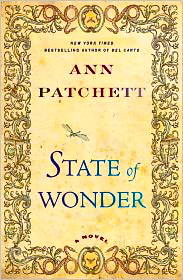 Living in the jungle of Brazil, a group of American researchers working for a pharmaceutical company is trying to complete their long research project on a dramatic rainforest discovery and ready a new drug for presentation to the FDA for approval. The leader of the project is Dr. Annick Swenson, a tough and disciplined seventy-three-year-old woman who has not left Brazil for over a decade. Though the pharmaceutical company is paying for all the expenses, no one at the company can find out the status of the project–the last person sent to check on it, Anders Eckman, died of fever shortly after his arrival at the camp. When word of Eckman’s death reaches the company, the president decides that someone must return to Brazil, find out more about what is happening at the lab, and bring back Eckman’s effects. Marina Singh, a single woman in her forties, who once studied with Annick Swenson, has shared an office with Anders Eckman, and it is natural that she be the person to make a follow-up trip to the jungle.
Living in the jungle of Brazil, a group of American researchers working for a pharmaceutical company is trying to complete their long research project on a dramatic rainforest discovery and ready a new drug for presentation to the FDA for approval. The leader of the project is Dr. Annick Swenson, a tough and disciplined seventy-three-year-old woman who has not left Brazil for over a decade. Though the pharmaceutical company is paying for all the expenses, no one at the company can find out the status of the project–the last person sent to check on it, Anders Eckman, died of fever shortly after his arrival at the camp. When word of Eckman’s death reaches the company, the president decides that someone must return to Brazil, find out more about what is happening at the lab, and bring back Eckman’s effects. Marina Singh, a single woman in her forties, who once studied with Annick Swenson, has shared an office with Anders Eckman, and it is natural that she be the person to make a follow-up trip to the jungle.
Within this framework, Patchett creates a novel which appeals on several levels at once. The exotic setting, filled with purple moths, blue mushrooms, yellow-barked trees, and other never-before-seen plant and animal life, captures the reader’s imagination, even as the main characters are fighting anacondas, medical problems such as fevers and malaria, and a tribe which shoots poisoned arrows. Her ability to call forth sense impressions gives vitality to the setting.
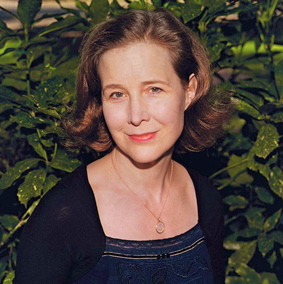
Patchett’s characters are as varied as the life in the jungle. The reclusive Dr. Annick Swenson has long worked with and admired her former teacher, Dr. Martin Rapp, who made major discoveries involving native plants. Rapp died ten years ago, but Dr. Swenson is carrying on his work and testing the drugs he discovered for their efficacy in treating medical problems in the developed world. Marina Singh, in love with her boss back home at the pharmaceutical company, can hardly wait to return home, and she is impatient at the wait in Manaus before she can even leave for the jungle. Only two people know where Annick Swenson’s lab is located, and they, a married couple, are “guards at the gate,” hired by Swenson to keep people away from her project. When Marina Singh finally manages to get to the camp, the first words Dr. Swenson says, are “You shouldn’t have come.” Only Easter, a deaf young Indian boy, skilled at piloting the boat to the camp, seems to need her.
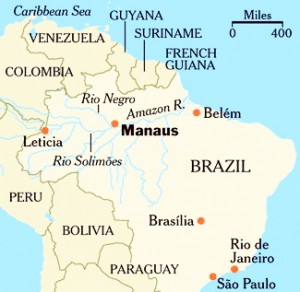
As the action evolves, the author develops her themes. Death is a constant threat, and the illnesses, accidents, and animal attacks keep that theme front and center throughout, even as the research project is supposed to be geared to saving lives. Balancing death as a theme, of course, is love. Dr. Swenson had a lover for many years. Eckman, the man who died in the jungle, has left behind a wife and three young children, all of whom are agonized by his absence and desperate for Marina to learn anything she can about his life and death there. Marina herself, formerly married, now loves Dr. Fox, back at the pharmaceutical company, but she empathizes with Eckman’s family and wants to help them. During the novel, several characters receive ghostly visitations from loved ones while they are incoherent with nightmares caused by the anti-malarial drugs they are taking, or when they face imminent death. These visions add information about the characters’ backgrounds and, at times, provide new directions for the plot.
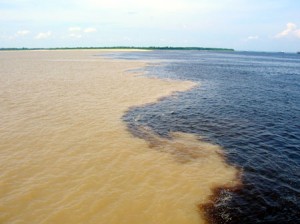
The Manaus meets waters from the Rio Negro
Ambition, to which all the characters have sacrificed years of their personal lives, so dominates the lives of many of them that, as characters, they often fail to come truly alive for the reader. Though they are individualized, they do not always feel completely human, and their motivations sometimes seem imposed from without, rather than inherent in their personalities. The dialogue conveys information and background more often than it conveys deep feelings. The character with whom the reader will feel most empathy is Easter, the young deaf child, whose fate seems tenuous, at best. Marina Singh, also creates empathy as she faces choices that challenge her to the limit. She is sometimes forced to behave in ways that she would not choose in any other circumstances.
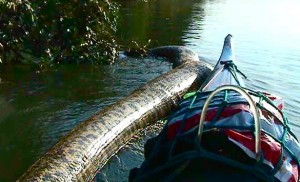
Anaconda
These are relatively minor defects, however, in a book that is so full of action and interest. Patchett raises many questions about what drives those who give up virtually everything for pure science, questioning how much is done from idealism, how much from naivete, and how much for personal gain. The action speeds along on the strength of a fast-paced narrative full of suspense: What really happened to Dr. Anders Eckman? What is the nature of the drug that Dr. Swenson is working so hard to protect and develop? How will it change modern life as we know it? Will the research project be able to prevent the modern world from intruding into the lives of the Lakashi tribe they have been studying? Can the jungle environment they call home be protected? Ultimately, Marina must make the biggest choice of her life, and I suspect that every reader of the book will weigh the issues as to whether she makes the “right” choice.
Photos, in order: The author’s photo is from her website: www.styleblueprint.com
The map of Brazil, showing Manaus, along the Amazon and Rio Negro, is from www.topnews.in
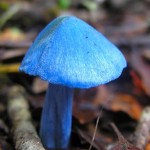
The dramatic convergence of the Amazon and the Rio Negro, is depicted here: Photo by buzz_1919 at http://photos.igougo.com The Rio Negro is the biggest blackwater river in the world.
An anaconda in the water plays a role in a main scene in this novel: www.focusonnature.com
Though the blue Rapp mushroom featured in this book is fictional, blue mushrooms do exist. The photo of the Etoloma hochstetteri (in New Zealand) is from http://lanalog.blogspot.com
